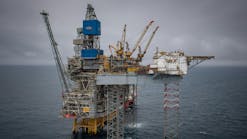As the engineer for Phillips Petroleum Co.'s Kenai, Alas., LNG plant, I spend a lot of time explaining to people the risks and benefits of LNG. A recent article contained misleading statements about the risk posed by LNG tankers (OGJ, Oct. 18, 1999, p. 24).
The statement, "Violence on ships could lead to an environmental catastrophe, either a major oil spill or-even worse-an explosion on an LNG tanker," greatly exaggerates the risk from LNG. An LNG tanker cannot cause a major explosion.
Modeling of major LNG releases using the Baker-Strehlow method shows a maximum overpressure of 0.15 psi. An overpressure of least 0.2 psi is required to break glass (API RP 752, Sec. 3.2.3, Table 3). LNG does not burn fast enough to generate explosive overpressures. As with most hydrocarbons, a release could cause a major flash fire. The flash generated from an LNG fire would be similar to the flash that occurs when a residue flare is lit.
The article also stated, "LNG carriers emerge as the vessels of preference. They are prime targets when loaded because the freeboard is shortest at that time." LNG tankers are near-constant-draft vessels, taking on ballast when empty. The freeboard is nearly the same, regardless of whether the ship is loaded or empty. Also, an LNG tanker would be of little value to pirates. LNG is a cryogenic liquid at -258° F.; it requires special handling and has a limited market (it is not nearly as marketable as crude or diesel).
LNG's properties of low flame speeds, rapid evaporation rate, and high purity (methane and ethane, with no heavy components) make it the most environmentally friendly energy source afloat.
R.J. (Jed) Watkins
Senior Production Engineering Specialist
Phillips Petroleum Co.
Kenai, Alas.

